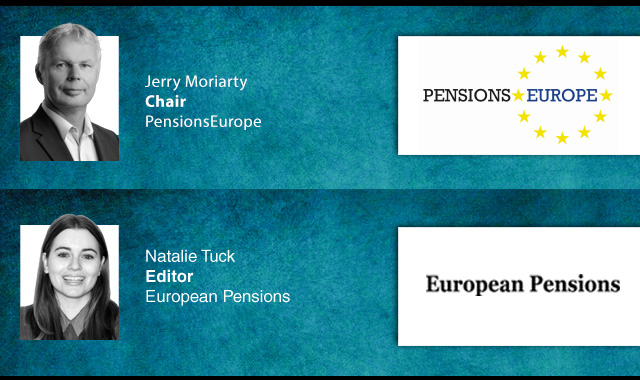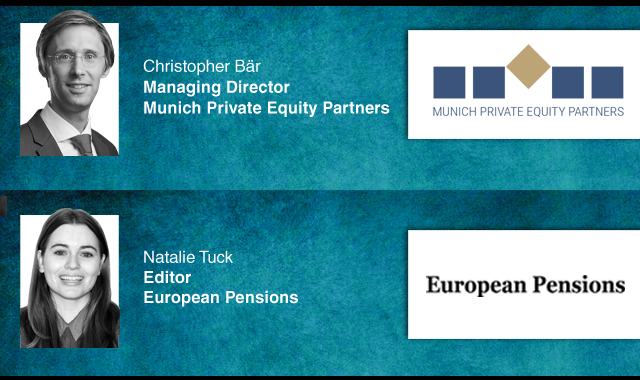Francesca Fabrizi speaks to secretary general and CEO of PensionsEurope Matti Leppälä about the issues facing European pensions, and the need for integration
In November 2011 Matti Leppälä, former director of international, investment and legal affairs at the Finnish Pension Alliance (TELA), was appointed as secretary general and CEO of PensionsEurope, previously known as the European Federation for Retirement Provision (EFRP). Eighteen months on and he cites the review of the IORP Directive and the need for increased cross-border cooperation as some of the main focus areas.
Q: What are the aims and objectives of PensionsEurope and how have they changed since the association was set up more than 30 years ago?
A: The world of pensions is very different today than it was back in 1981 when our association was founded. Pension funding is on a totally different level and DB pensions are, in general, no longer offered for new workers as DC pensions seem to be the only solution possible today. This is the result of many different developments, such as international accounting rules or fair value and mark-to-market principles. We realise these changes are real and wish to be the leading voice for workplace pensions now and into the future. We will now therefore place more emphasis on DC schemes than we did before. PensionsEurope has also established two standing committees, one for DB and one for DC, to help the board of directors to define the PensionsEurope policy.
Q: What changes have you seen since you arrived?
A: In recent months, PensionsEurope has undergone some profound changes. Not only did we change the name of the organisation, we have also made some changes to our strategy and structure. Due to various changes in the European pension landscape, PensionsEurope aims to widen its horizon. We wish to be open to all workplace pensions, which are very diverse and continuously changing. We believe that statutory first pillar pensions, often based on the pay-as-you-go principle, will remain the base for most, but because of demographic changes and the slowing growth of the economy, adequate and sustainable pensions are funded workplace pensions. Third pillar individual retirement savings can be an important part of good pensions but they are too expensive and don’t cover the workforce in such a degree that they could provide more than additional income. We also changed our mission statement to state that PensionsEurope promotes good pensions for people in Europe.
We are the representative organisation for European pensions as our members include 22 national pension fund organisations from 20 countries. The European Union is certainly different to what it was back in 1981 and we need to acknowledge the changes and find the most effective ways to influence the decision-making processes. For example, the new European supervisory authorities and, in our case especially, EIOPA are important new players in our field. Many issues that are relevant to our members today are also global issues. In order to take care of our members, we need to act wherever necessary. That is why we are launching a new co-operation with European AEIP and US-based ABC and NCCMP, which represent both company and multi-employer pensions, as well as Canadian MEBCO.
Q: What are your thoughts on the White Paper on Pensions and the review of the IORP?
A: I started in November 2011 and it was clear even then that these were exciting times for pensions at a European level. There was already the Green Paper on pensions and with the White Paper published last year we have a very broad agenda for EU level action in pensions for a number of years to come. When I joined PensionsEurope, the review of the IORP Directive was also well under way and it has kept me busy ever since. It looks like it will continue for the foreseeable future as the European Commission still plans to table a proposal for a new directive this summer. We, however, think that much more time should be taken and work done before any proposal should be tabled. What we’ve seen thus far would be detrimental not only for our members but for the European economy, employment and financial markets. I have worked full time in pensions since 2001 but before that, 10 years in industrial relations. I am very happy that we are now working closely with EU level social partners as well as fund and asset management and venture capital organisations as we truly share the same interests with the future of pension funds as investors in Europe. I believe in networks and working together for common interests.
Q: What are the biggest challenges facing the association in the current climate?
A: There is no shortage of challenges in pensions. The most imminent one is that the EU does not recognise that pension funds are different to insurance companies and is attempting to enforce a similar solvency framework for both. There is a real misunderstanding of what pension funds are and how to provide real security for people’s pensions. De-risking your portfolio and putting everything in ‘risk free’ government bonds definitely isn’t the way. For me the challenge is getting our message heard by all the relevant people and that means we need the help of many others. I believe that the various networks we are working with will help carry our message forward. We are opposing the ideas of the European Commission on the solvency framework but the big challenge is developing an alternative model that fits all of our diverse members. It may well be that the right solution is that there should not be a harmonised solvency framework for pension funds.
Q: What are the main challenges facing your members?
A: As our members come from all corners of Europe there are many different challenges. Austerity measures put pressure on some, as governments have tightened tax rules and also economic policy has threatened the role of pension funds. The extreme example is of course Hungary where most of the pension fund assets were nationalised. On the other hand, we have members from economies such as Germany, the UK and the Netherlands where pension debates take different forms. But pensions have become very topical political issues in most countries and with the ongoing financial, economic and fiscal crisis, our members are faced with many changes. Our task is to work at an EU level in order to provide a good outcome at a member state level.
Q: PensionsEurope has also established a Central & Eastern European Countries (CEEC) Forum to discuss issues common to pension systems in that region. How do issues in that region differ?
A: CEEC countries adopted different pension system models in the 1990s than older EU members. They are usually DB and mandatory second pillar administered by private companies. The governance structures are different than in countries where pensions are based e.g. on collective agreements and the participation of social partners. CEEC countries need funded workplace pensions in order to provide adequate sustainable pensions for their people; and while trying to do so, they are now often under the threat of governments interested in using the pension fund assets for some other purpose. We seek to increase our membership in the CEEC region in order to protect their interests. CEEC countries are also EU decision makers and for us to be the leading voice for pensions in Europe, their membership with us is very important.
Q: PensionsEurope provides its members with a platform to exchange best practice ideas, but do you think countries do enough to learn from each other’s successes and mistakes?
A: I think we should learn more from others than we have. PensionsEurope promotes this with working groups and also with our new standing committees where our members share ideas and experiences with different service providers, such as consultants and asset managers. We are the experts in pensions and we should take advantage of that. Saying that, it is not always easy to get the best possible solutions through at a European or member state level.
Francesca Fabrizi is Editor-in-Chief, European Pensions
Latest News
-
Pension gap and VfM dominate Europe’s consumer risk landscape
-
Europe’s pension associations welcome IORP stress test results
-
AAE identifies ‘cross-cutting challenges’ of European pension tracking service
-
I&P Denmark hails govt’s 82% climate target as ‘strong signal to the world’
-
News in brief: 19 December
-
European insurtech firm Lumera acquires Acuity for undisclosed amount
Podcast: Stepping up to the challenge

In the latest European Pensions podcast, Natalie Tuck talks to PensionsEurope chair, Jerry Moriarty, about his new role and the European pension policy agenda
Podcast: The benefits of private equity in pension fund portfolios

The outbreak of the Covid-19 pandemic, in which stock markets have seen increased volatility, combined with global low interest rates has led to alternative asset classes rising in popularity. Private equity is one of the top runners in this category, and for good reason.
In this podcast, Munich Private Equity Partners Managing Director, Christopher Bär, chats to European Pensions Editor, Natalie Tuck, about the benefits private equity investments can bring to pension fund portfolios and the best approach to take.
In this podcast, Munich Private Equity Partners Managing Director, Christopher Bär, chats to European Pensions Editor, Natalie Tuck, about the benefits private equity investments can bring to pension fund portfolios and the best approach to take.
Mitigating risk
BNP Paribas Asset Management’s head of pension solutions, Julien Halfon, discusses equity hedging with Laura Blows
© 2019 Perspective Publishing Privacy & Cookies







Recent Stories